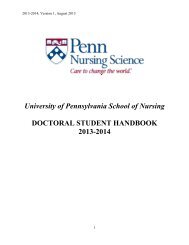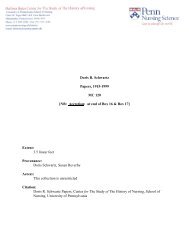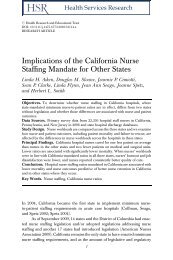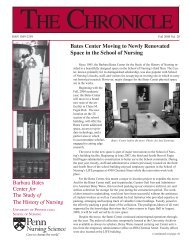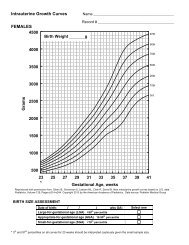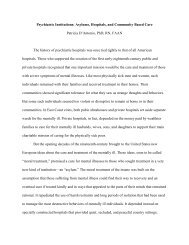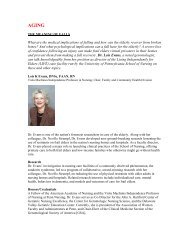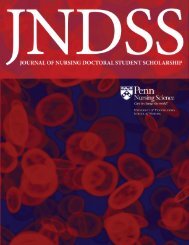10 Landmark Nursing Research Studies - National Institute of ...
10 Landmark Nursing Research Studies - National Institute of ...
10 Landmark Nursing Research Studies - National Institute of ...
Create successful ePaper yourself
Turn your PDF publications into a flip-book with our unique Google optimized e-Paper software.
HELPING YOUTHS ESTABLISH HEALTHY<br />
HABITS OF EXERCISE AND DIET<br />
While cardiovascular disease (CVD) usually strikes adults over<br />
40 years <strong>of</strong> age, lifestyle behaviors that contribute to its development<br />
<strong>of</strong>ten begin in childhood. One major CVD risk factor is<br />
physical inactivity. Over one-quarter <strong>of</strong> adolescents say they are<br />
rarely involved in vigorous activities, and school-based physical<br />
education classes <strong>of</strong>ten do not provide adequate time or intensity<br />
<strong>of</strong> exercise. The rates <strong>of</strong> overweight and obesity among children<br />
are rising, <strong>of</strong>ten due to inactivity and poor nutrition. Children are<br />
increasingly found to have hypertension and elevated cholesterol.<br />
Smoking also tends to start during adolescence. Nurses working<br />
with children and teenagers can foster healthy lifestyle patterns to<br />
prevent the early development <strong>of</strong> CVD.<br />
Summary <strong>of</strong> <strong>Research</strong><br />
Dr. Joanne Harrell, pr<strong>of</strong>essor at the University <strong>of</strong> North Carolina<br />
at Chapel Hill, is the principal investigator for the NINR-funded<br />
Cardiovascular Health in Children and Youth (CHIC) studies.<br />
She has developed education and exercise programs that focus on<br />
improving physical activity and reducing long-term cardiovascular<br />
risks for use in schools across North Carolina, which has one <strong>of</strong> the<br />
highest rates <strong>of</strong> death from CVD and stroke in the U.S.<br />
An early CHIC study (CHIC I) involved over 1,200 elementary<br />
school students. In the program, the students received classes twice<br />
4<br />
This research is helping to:<br />
PREDICT youths at risk for cardiovascular disease (CVD) related to sedentary lifestyles;<br />
PERSONALIZE strategies to help youths stay active and develop heart-healthy habits;<br />
PREEMPT the early stages <strong>of</strong> CVD, obesity, type 2 diabetes, and other chronic<br />
conditions in school-aged children, providing health benefits throughout adulthood.<br />
Changing Practice, Changing Lives: <strong>10</strong> <strong>Landmark</strong> <strong>Nursing</strong> <strong>Research</strong> <strong>Studies</strong> 9





